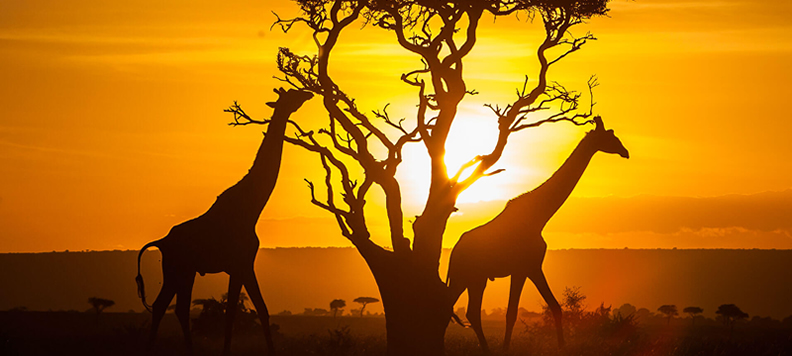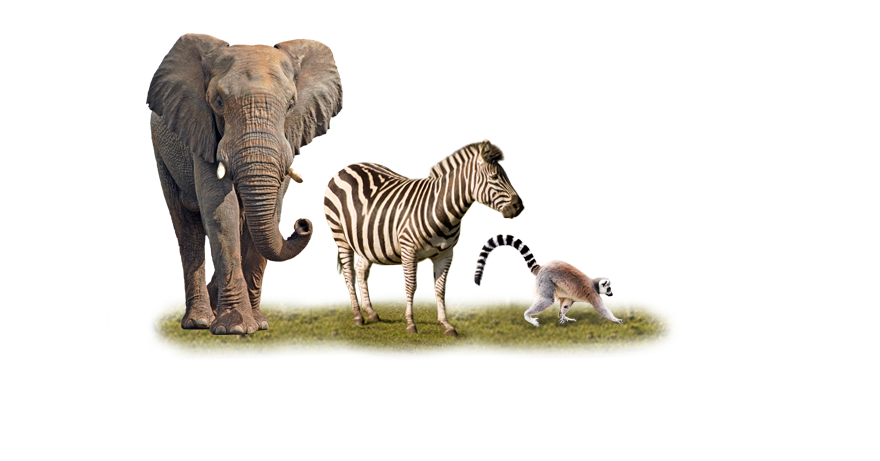About Kenya Safaris
Kenya has attracted explorers and adventurers for centuries. One of the world’s most famous travel destinations, Kenya is renowned for its remarkable diversity of landscapes, animals and cultures. From vast plains to snowcapped mountain summits, Kenya provides a striking backdrop for Africa’s most classic safari adventures. Witness the Great Migration in the Maasai Mara. Hear elephants trumpet in Amboseli. Scout for rhinoceros making a comeback at Lewa. At night, tucked beneath canvas under a canopy of stars, listen to a lion roar across the savanna. It’s all here in Kenya, Africa’s original safari destination.
Kenya Safari Highlights
While Kenya is one of Africa’s most popular safari destinations, the camps and lodges we use, and the routes we have designed, take you far from crowds—except crowds of animals. Explore the remote reaches of Kenya’s parks and enjoy day and night drives and bush walks in exclusive private reserves. The fabled Maasai Mara is the Kenyan side of Tanzania’s Serengeti. Wildlife is prolific here any time, but nothing tops the Great Migration, when nearly two million wildebeest and zebra follow the rains to new grass. The region is also the traditional home of the Maasai, nomadic pastoral herders. Amboseli, watered by melting snows off imposing Mt. Kilimanjaro, supports abundant wildlife, including great numbers of elephant. In the north lies arid Samburu, with unique species such as reticulated giraffe and Somali ostrich. To see endangered rhinoceros, don’t miss Lewa Conservancy, Africa’s most successful rhino sanctuary.
Kenya Wildlife
At least the Rift Valley’s historical influence cannot be diluted. People have trekked down it, generation after generation, over perhaps the last two or three thousand years, from the wetlands of southern Sudan and the Ethiopian highlands. Some of the more recent immigrants were the ancestors of the Maasai, who dominated much of the valley and its surroundings for several centuries before the Europeans arrived. Until the beginning of the twentieth century the Maasai lived on both sides of the valley, and the northern Ilaikipiak group were a constant threat to trading caravans coming up from the coast.
Quick Kenya Facts
No other African country boasts the diversity of Kenya. From its palm-fringed coast to the 17,057’ summit of Mt. Kenya, from lush tea plantations to desert scrub, Kenya’s varied landscapes are matched only by its variegated cultures. About twice the size of Nevada, Kenya is bordered by the Indian Ocean, Somalia, Ethiopia, South Sudan, Uganda and Tanzania. The Great Rift Valley bisects the central highlands, one of the richest agricultural regions in Africa. Kenya gained independence from Britain in 1963 but has struggled with political tumult since. Kenya’s population is 41 million, with 42% under 15. Nairobi, the capital, is home to 3.4 million people. English and Swahili are the official languages. Kenya is the regional hub for trade and finance in East Africa, and its economy is dominated by tourism, transportation, communications and agriculture. Principal cash crops are tea, horticultural produce and coffee.
Conservation in Kenya
Kenya’s diverse ecosystems are in danger. Drought, climate change, deforestation, population pressures and inadequate government oversight all challenge sustainability. Key flagship species such as the African elephant, rhinoceros and lion are at critical crossroads for survival. Other endangered mammals include roan, sable, sitatunga, Grevy’s zebra and wild dog. Yet significant strides in conservation continue, particularly through public-private partnerships. The Kenya Wildlife Service formulates strategic plans for sustainable management of wildlife and their habitats, partnering with a host of international governmental and non-profit organizations in scientific research, community outreach and educational campaigns. Widespread recognition exists that the future of wildlife and wild lands depends on demonstrating direct benefits from conservation to communities. Economic incentives and conservation-friendly use of private lands, especially in buffer zones around reserves, are integral to the protection of Kenya’s wildlife.


